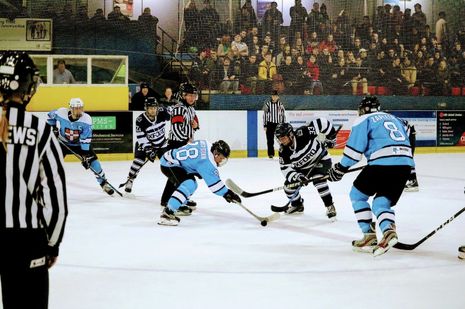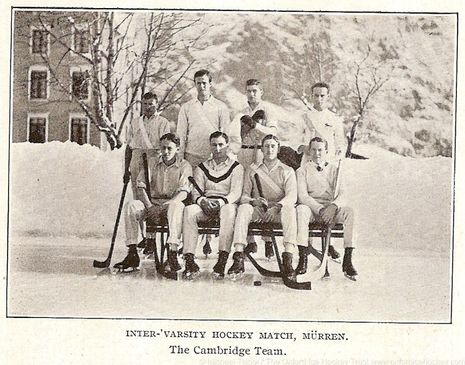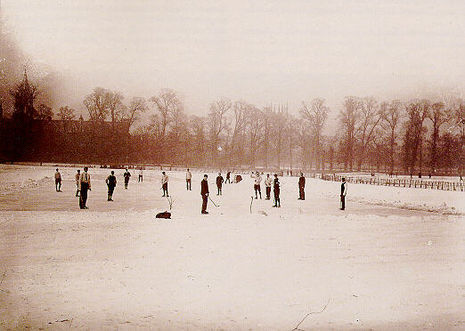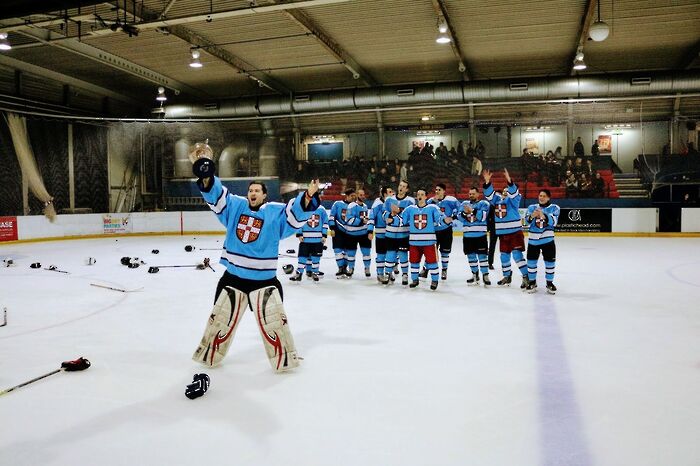The Hazy History of Cambridge Ice Hockey
As the Light Blues gear up for this Saturday’s age old Varsity contest, Sports Editor Joseph Powell attempts to look through the ice at CUIHC’s fabled history.

This Saturday (07/03), Cambridge University Ice Hockey Club (CUIHC) and Cambridge University Women’s Ice Hockey Club (CUWIHC) will take to the ice for the 102nd Men’s and 37th Women’s Varsity contests. Much like their predecessors, they will face-off with only one intention – emphatically dispatching Oxford to maintain a century’s old history in what is billed as ‘hockey’s oldest rivalry’ globally.
However, unlike their predecessors, they will for the first time ever skate out on home turf at the newly christened Cambridge Ice Arena. Completed in late 2019, the Arena now provides CUIHC and CUWIHC with both training facilities and most crucially a spiritual home after a years of wandering nomadism. Both of these offer Saturday’s fixture a home advantage that will make for an absolutely captivating watch.
But what exactly is the history behind one of the University’s oldest sporting clubs and equally this ‘oldest rivalry’ in world ice hockey? The answer takes us across century’s and continents before arriving at the Cambridge Ice Arena today.
CUIHC traces it’s establishment back to the late 19th century, with the club proudly exhibiting its apparent 1885 foundation date on it’s crest. However, unlike the University’s football, rugby or athletics’ club, CUIHC’s origins appear as opaque as the ice on which they skate.
The 1885 date touted on CUIHC’s crest refers to what is claimed to be the first ever ice hockey Varsity game between Oxford and Cambridge in the Swiss alpine resort of St. Moritz. And it is indeed a fixture with some official provenance. To mark the contests centenary in 1985, the International Ice Hockey Federation (IIHF) formally recognised the date of the first game as the first between the two University’s, the first ice hockey game played in Europe and the oldest rivalry on ice in the world.

This date is however a contentious one. Whilst the CUIHC website states unequivocally that it’s founding comes in 1885 ‘only ten years after the first officially recorded ice hockey games in the world’, that of the Oxford University Ice Hockey Club (OUIHC) describes the 1885 match as ‘apocryphal’ and states ‘little contemporary evidence’ exists for the fixture.
Simon Rabinovitch, writing for Reuters, goes further in claiming that no ‘hard evidence’ of the game has been found yet, quoting ice hockey historian Michael Talbot who posits it might be a mistake in recording or ‘a case of someone creating instant tradition’.
In a case of political lobbying more familiar on Capitol Hill than the ice rinks of the UK, a 2002 article from OUICH’s website claims that recognition of the date by the IIFH is likely attributable to ‘pressure by then President of the British Ice Hockey Association and former Light Blue goalie – Fred Meredith’. Scandalous if true, but of course taken with a pinch of salt given it’s authors.
Some of the confusion around this may stem from a matter of categorisation. Whilst the 1885 game is lacking physical evidence beyond a 6-0 score line (to Oxford, allegedly), some historians of the game have posited that had the encounter taken place is was far more likely to have been a game of bandy, much like a recorded 1895 encounter between OUIHC and CUIHC.
Bandy, for the those lukewarm on ice based sports, is a game which offers a hybrid amalgamation of ice hockey, field hockey and football. Players essential adhere to field hockey rules, with bowed sticks and a ball instead of angular sticks and a puck, and line up (usually outdoors) in teams of 11 over two 45 minute halves. Coincidentally, the origins of bandy also reputedly lay in Cambridgeshire, with the first records of the game placing it on on a frozen Fen in 1813.

So where can its origins be safely placed? Just on the other side of the 19th century, ice hockey historian Phil Drackett in ‘Flashing Blades’ attributes re-emergence of the Varsity as a fully fledged ice hockey fixture with Canadian Cambridge student J.J Cawthra, who organised a game in the slightly less scenic surroundings of the Prince’s Skating Club in London on 16th March 1900.
A repeated fixture in 1901 saw an adoption of the puck and rink format which was to define the game in the next century. After 1909 the fixture began taking place annually on ice rinks around Europe, popularising the sport and drawing crowds in the thousands until postponement came due to World War 1.
The interwar years saw the two teams compete for the Patton Cup, named for Peter Patton the first president of the British Ice Hockey Association, and returned to England in 1932 at the Richmond Ice Rink. Beyond WW2 the Varsity games took place annually as they have to the present day. Over the years the fixture has seen many notable faces don their skates, including former Canadian Prime Minister and Nobel Laureate Lester B Pearson and current Bank of England Governor Mark Carney, both for the Dark Blues.
In modern times, the annual Varsity is just as compelling as it would have been out on the icy flats of the Princes Skating Club (or St. Morritz) all those years ago, and has featured some memorable highlights for CUIHC. The most recent outing saw a dominant Light Blues lay down an 8-1 thrashing, whilst victories in 2017 and 2011 came at margins of 8-3 and 5-1 respectively.
Games have previously alternated between the Oxford Ice Rink and an ice rink of Cambridge’s nomination owing to the lack of proper facilities within the city. However, with CUIHC and CUIWHC’s home coming to the Cambridge Ice Arena, it is time to lay down some new history for both sides.
So, while the Varsity fixture might not stretch back quite as far as 1885, both clubs are no less distinguished for it. CUIHC's formative role in the sport's emergence, popularisation and formulation in the UK is beyond question, and recent results demonstrate unequivocally what a dominant force it has now become.
And as preparations gear up for another Varsity, the Light Blues need look barely beyond city limits in order to emulate it’s pioneering forefathers and claim yet another victory over the Dark Blues.
Event information for the 102nd and 37th Varsity is available here.
 Comment / Plastic pubs: the problem with Cambridge alehouses 5 January 2026
Comment / Plastic pubs: the problem with Cambridge alehouses 5 January 2026 News / Cambridge academics stand out in King’s 2026 Honours List2 January 2026
News / Cambridge academics stand out in King’s 2026 Honours List2 January 2026 News / Cambridge businesses concerned infrastructure delays will hurt growth5 January 2026
News / Cambridge businesses concerned infrastructure delays will hurt growth5 January 2026 News / AstraZeneca sues for £32 million over faulty construction at Cambridge Campus31 December 2025
News / AstraZeneca sues for £32 million over faulty construction at Cambridge Campus31 December 2025 Interviews / You don’t need to peak at Cambridge, says Robin Harding31 December 2025
Interviews / You don’t need to peak at Cambridge, says Robin Harding31 December 2025











